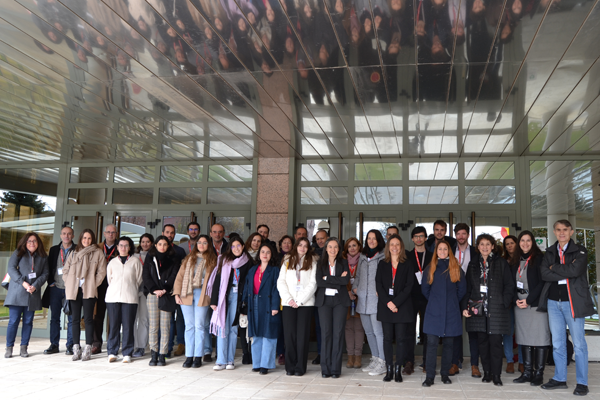The ICMM-CSIC leads a revolutionary European project to repair spinal cord injury with nanotechnology

The Institute of Materials Science of Madrid (ICMM), CSIC, leads pioneering research in the world that aims to repair spinal cord injuries through materials science, regenerative medicine, and nanotechnology. The Piezo4Spine initiative, endowed with 3.6 million euros through the Pathfinder funds of the European Union, is coordinated by the ICMM researcher Conchi Serrano and has the participation of seven research centers from six European countries.
"Our goal is to try to understand spinal cord injury better and, with that knowledge, provide a therapeutic solution for spinal cord injuries," explains Serrano. "We have considered two specific targets to which the scientific community has not given sufficient importance up to now: Piezo mechanoreceptors and fibroblasts that participate in response to neural damage", says the researcher.
The working hypothesis of the proposal is based on the concept of mechanotransduction, that is to say: "the capacity of our cells and tissues to feel and respond to mechanical stimuli". Serrano indicates that, just as cells are sensitive to chemical and biological stimuli, they feel mechanical movements, and the objective of his work is precisely to investigate these physiological mechanical processes and how they are related to the functioning of neural tissue in a physiological state and pathological.
This is a pioneering science. In fact, it was not until about a decade ago (2010) that these mechanical receptors were discovered in cells; a discovery that earned Arden Patapoutian the Nobel Prize in Physiology or Medicine in 2021. "He identified for the first time the protein receptor that is in the cell membrane and is capable of sensing mechanical vibrations and triggering specific cellular responses," Serrano mentions. It is these mechanical receivers, called 'Piezo', that represent the basis of this innovative work and its most revolutionary point. "We wonder why not use these Piezos and see what implication they have in pathological processes such as spinal cord injury", says Serrano.
In addition to the study of Piezo receptors and their involvement in neural damage, the work proposes a second therapeutic pillar: developing genetic engineering tools to 'modulate' fibroblasts that participate in healing processes. These fibroblasts are one of the fastest responding cell types to 'check and heal' the damaged area of the body. However, this activation hinders the natural regeneration of damaged neural tissue, in this case, the spinal cord. For this reason, the Piezo4Spine consortium is going to work on blocking these fibroblasts, favoring the regenerative processes of the body itself.
"Throughout the project, we will develop a three-dimensional matrix by 3D bioprinting loaded with nano vehicles that will deliver active therapies to the lesion site," says Serrano, who is sure that, if successful, "this project will allow access to new knowledge and technologies that could not only be useful for neural regeneration, but also for other pathologies."
Piezo4Spine has the participation of the National Hospital for Paraplegics (Spain), the Italian Technological Institute (Italy), the University of Coimbra (Portugal), the Catholic University of Louvain (Belgium), the company Black Drop Biodrucker GmbH (Germany) and the company ACIB GmbH (Austria). Researchers Puerto Morales and Sabino Veintemillas (MaMBIO Group) and Ricardo García (ForceTool Group) also participate in ICMM.
Specifically, the CSIC team, in addition to coordinating, will play a key role in the project, participating and leading many of the tasks related to the development of therapeutic nano vehicles and the three-dimensional matrix, the study of Piezo receptors and the evaluation and validation of the proof of concept in cell cultures and in the preclinical model of spinal cord injury in rats. The Associated Unit that the CSIC maintains with the Paraplegics Hospital of Toledo will provide a clinical perspective and support for the close collaboration between both centers.
-- Ángela R. Bonachera - ICMM-CSIC Communication Unit || Photo: Carlos Arroyo (Morgan) --
Instituto de Ciencia de Materiales de Madrid (ICMM)
Sor Juana Ines de la Cruz, 3
Cantoblanco, 28049
Madrid, España
Telephone: (+34) 91 334 90 00
Email: @email
Communication Office: @email

Acknowledge the Severo Ochoa Centres of Excellence program through Grant CEX2024-001445-S/ financiado por MICIU/AEI / 10.13039/501100011033

Contacto | Accesibilidad | Aviso legal | Política de Cookies | Protección de datos